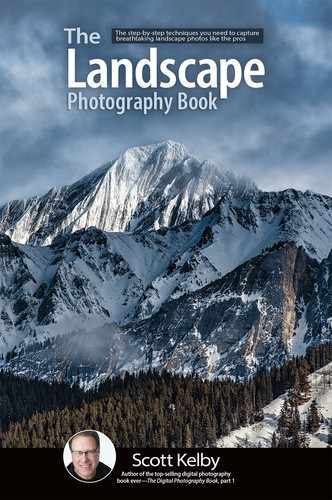You’ll Need an ND (Neutral Density) Filter

The key to taking long exposures during daylight hours (when your camera wants to use a very short shutter speed) is to make your camera keep your shutter open longer than it thinks it should to make a proper exposure. We do this by putting a really dark filter—a neutral density filter (ND filter, for short; we looked at these in Chapter 1)—over our lens. They come in different darkness amounts, from a 1-stop filter (that just makes your exposure 1 stop darker, so as you might imagine, 1-stop filters aren’t very popular) up to 12- to 15-stop filters (I’ve never used one darker than 15. Heck, I don’t even know anyone with one darker than 15 stops. That’s really, really dark). I’m a 10-stop ND filter guy myself—that’s my go-to amount of darkness. It allows me to shoot long exposures in almost any light. You can get this as a screw-on filter, which is great if you’re on the go a lot (I use a Haida), but if you buy a screw-on filter like this, you can only use it on lenses that are that exact size (the actual size of the glass—mine only fits my 77mm lens). That’s why I also have a different style Haida ND filter—it’s a square sheet of glass that slides into a holder system that goes in front of your lens (seen on the next page). The advantage of this system is I can buy inexpensive adapters, which let me use that filter on smaller or larger lenses. It’s not as convenient as using the simple screw-on filter, but it’s still easy to use (it just takes more steps and it’s larger to carry around). By the way, what I like about the Haida ND filter is that the color is right on the money. Many ND filters introduce some sort of color cast (for example, my B+W brand ND filters make my long exposures have a brown tint, which actually can kinda look good, but it’s not accurate color).
